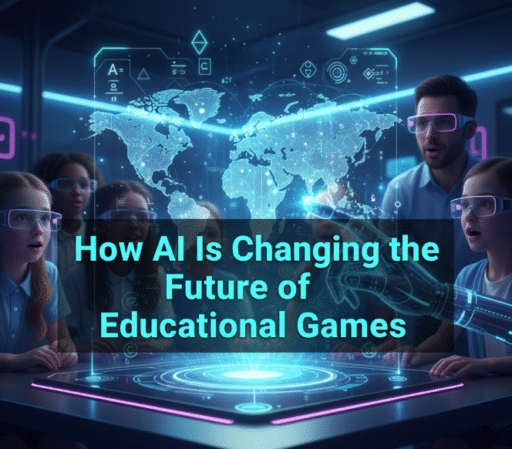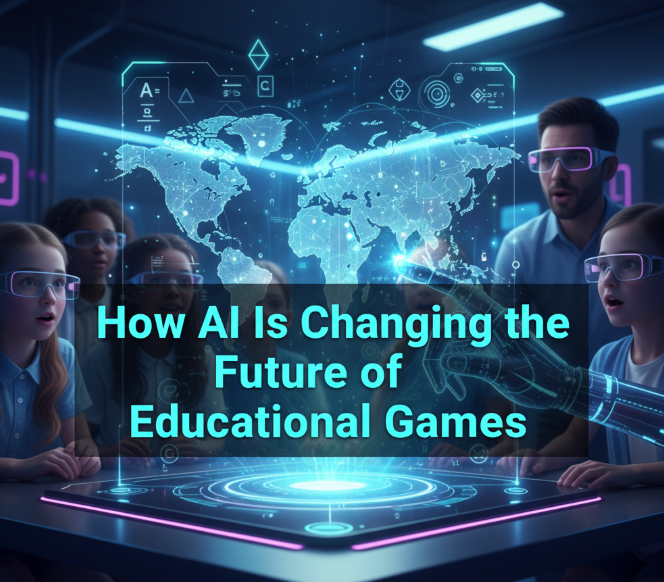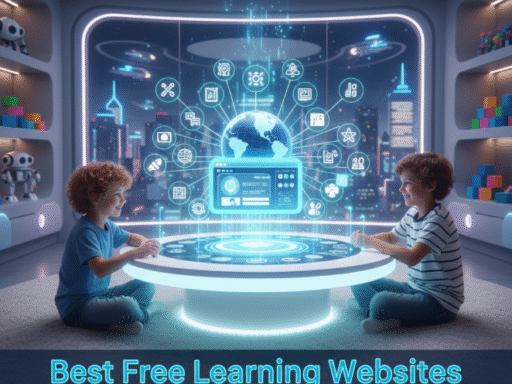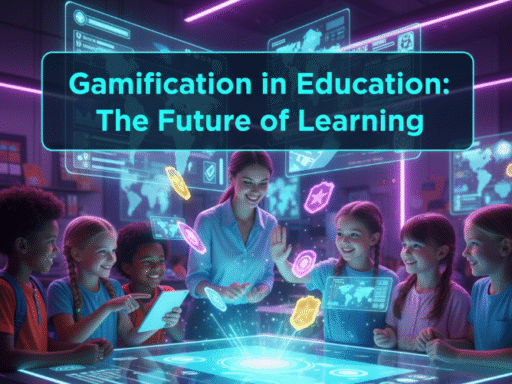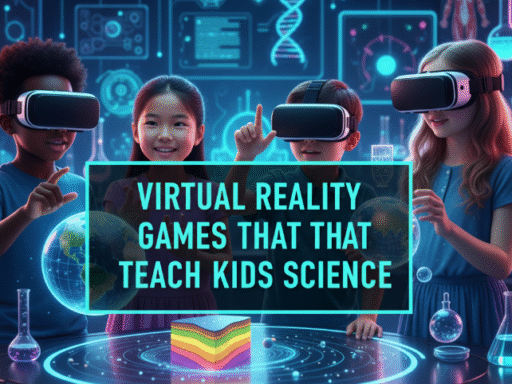Introduction
Educational games have come a long way from simple math puzzles and spelling quizzes on old computers. Today, they are becoming smarter, more interactive, and far more engaging than ever before. At the center of this revolution is Artificial Intelligence (AI). AI is no longer just a futuristic concept—it is actively shaping the way children and even adults learn through games.
Imagine a game that knows your strengths, understands your weaknesses, and creates new challenges that perfectly fit your learning style. That’s what AI-powered educational games are now making possible. These games can provide personalized learning, real-time feedback, and interactive experiences that make studying feel more like play.
In this article, we’ll explore in detail how AI is changing the future of educational games, why it matters, and what exciting possibilities lie ahead.
Why Educational Games Are Important
Before we dive into the role of AI, let’s look at why educational games matter in the first place.
-
Fun Learning: Games make learning exciting instead of boring.
-
Active Participation: Students are not just listening—they’re doing.
-
Motivation Boost: Rewards, levels, and challenges keep learners motivated.
-
Safe Environment: Mistakes can be corrected without pressure or fear of failure.
-
Skill Development: Beyond academics, games build problem-solving, teamwork, and creativity.
Educational games are already powerful learning tools. Now, with AI in the mix, they’re becoming even more effective.
The Role of AI in Educational Games
AI brings intelligence to games, making them more than just pre-programmed experiences. Instead of offering the same questions to every player, AI adapts and evolves. Here’s how:
1. Personalized Learning Journeys
Traditional games follow the same pattern for all players. But AI-powered games adjust the difficulty level, topics, and pace depending on each learner’s performance.
-
If a student struggles with fractions, the game gives more practice in that area.
-
If another student excels in reading comprehension, the game pushes them toward more advanced challenges.
This way, no two learning paths look the same.
2. Real-Time Feedback
AI allows games to give instant corrections and explanations. Instead of waiting for a teacher to check answers, learners can understand mistakes right away.
For example:
-
A math game might highlight the wrong calculation and show step-by-step how to solve it correctly.
-
A language-learning game could correct pronunciation on the spot.
3. Adaptive Difficulty Levels
AI ensures that the game is never too easy or too hard. By constantly tracking progress, it keeps players in the “sweet spot” of challenge—engaged but not frustrated.
4. Data-Driven Insights for Teachers and Parents
AI collects detailed learning data and presents it in simple dashboards. Teachers and parents can see:
-
Which subjects a child is strong in
-
Where they need extra help
-
How fast they are improving
This information helps adults support learning outside the game.
5. Interactive Storytelling
Some AI educational games use natural language processing (NLP) to let players talk with characters, ask questions, and get intelligent responses. This makes learning feel like an adventure instead of a lecture.
How AI Enhances Different Types of Educational Games
Not all educational games are the same. AI improves them in different ways:
| Type of Game | Traditional Style | With AI |
|---|---|---|
| Math Games | Pre-set problems with fixed answers | Adapts to skill level, explains mistakes, gives hints |
| Language Learning Games | Vocabulary drills and grammar exercises | Speech recognition, instant corrections, customized vocabulary |
| Science Games | Static experiments and quizzes | Simulated labs, interactive problem-solving, real-time outcomes |
| History & Geography | Memorization-based quizzes | Immersive storytelling, interactive maps, adaptive questions |
| Creative Games | Limited puzzles or drawing activities | AI-generated challenges, feedback on creativity, personalized suggestions |
Real-World Examples of AI in Educational Games
Here are some real-life cases where AI is transforming learning through games:
-
Duolingo (Language Learning): Uses AI to adjust lessons based on mistakes, ensuring learners focus on weak areas.
-
DreamBox (Math): Tracks student progress and adapts problems in real time.
-
Kahoot! AI Quizzes: AI-powered question generation creates customized quizzes for classrooms.
-
Minecraft Education Edition with AI Mods: Students solve real-world challenges like environmental issues using AI-based tools.
Key Benefits of AI-Powered Educational Games
1. Learning Becomes More Inclusive
AI games can be designed to support learners with disabilities, such as speech recognition for those with reading difficulties or adaptive visuals for students with vision challenges.
2. Increased Engagement
AI makes games unpredictable and exciting by constantly adjusting challenges, so learners stay motivated.
3. Long-Term Retention
Because AI keeps reviewing weak areas until they are mastered, students remember knowledge for a longer time.
4. Encourages Independent Learning
Learners don’t always need a teacher nearby—AI acts as a tutor inside the game.
Potential Challenges and Concerns
While AI in educational games is promising, there are also concerns:
-
Data Privacy: AI systems collect large amounts of student data. Protecting this data is crucial.
-
Over-Reliance on Technology: Students may depend too much on games instead of real-world learning.
-
Cost: Developing high-quality AI educational games can be expensive.
-
Accessibility: Not all schools or families can afford devices that run advanced AI-powered games.
The Future of AI in Educational Games
The journey is just beginning. Here’s what we can expect in the coming years:
1. Virtual Reality (VR) + AI
Imagine exploring ancient civilizations or outer space in a fully interactive 3D environment, guided by an AI tutor.
2. Emotional Recognition
Future AI systems might detect frustration or boredom through facial expressions and adjust the game accordingly.
3. Global Classrooms
AI games could connect learners from different countries, promoting cultural exchange while learning subjects together.
4. Career-Oriented Games
Games may soon prepare students for real jobs—like AI-powered simulations for doctors, engineers, and scientists.
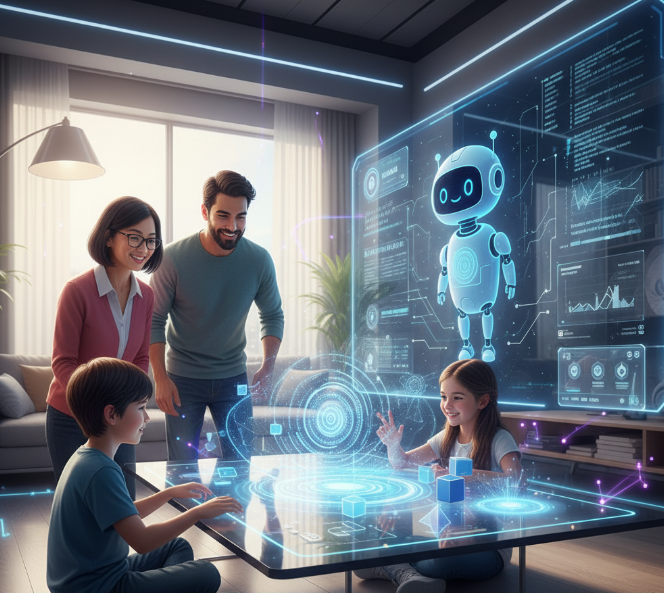
Tips for Parents and Teachers When Choosing AI Educational Games
If you’re selecting AI-powered educational games for your child or classroom, consider the following:
-
Check for Age Appropriateness – Choose games designed for the right grade level.
-
Look at Data Privacy Policies – Ensure the game doesn’t misuse student information.
-
Balance Screen Time – Use AI games as a supplement, not a replacement, for real-world learning.
-
Focus on Goals – Pick games that align with specific learning needs (math, science, reading).
-
Monitor Progress – Use the insights provided to support learning beyond the game.
Infographic: How AI is Shaping Educational Games
(Concept for Visual Infographic — You can add this graphic to your blog post)
-
🎮 Adaptive Learning → Personalized pathways
-
⏱ Instant Feedback → Corrects mistakes quickly
-
📊 Smart Analytics → Data for teachers/parents
-
🗣 Speech & Text AI → Helps with languages
-
🌍 Immersive Worlds → Virtual labs & cultural learning
Conclusion
AI is not just changing the way we play games—it is changing the way we learn. Educational games powered by AI bring together the best of both worlds: the excitement of gaming and the power of intelligent, personalized learning.
From adaptive math challenges to interactive language tutors, AI ensures that every learner has a unique path that matches their pace and style. While there are challenges like cost and data privacy, the benefits far outweigh the risks.
The future classroom will likely include AI-powered educational games as a regular part of learning. By combining fun with knowledge, these games make education not only more effective but also more enjoyable.
The next generation of students will not just play games—they will learn, grow, and thrive through them.
